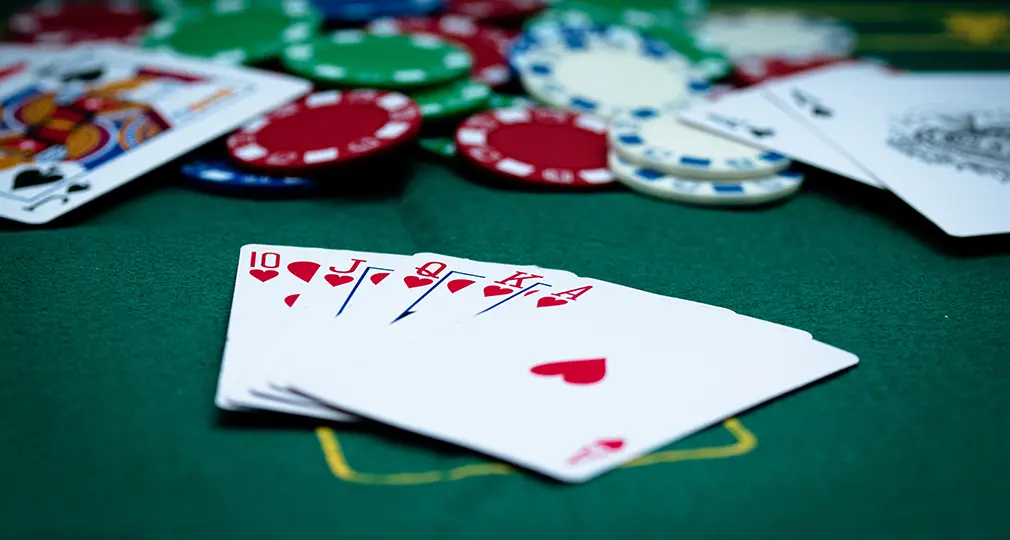When you google “women in poker,” the first thing you see is titles like “the sexiest/hottest female poker players.” Despite women’s numerous achievements and winnings, the poker community still emphasizes the appearance and sexuality of female players, perceiving their high competence, skills, and professionalism as something secondary. And it’s only one simple example…
As difficult as it was, women have made significant strides in the predominantly male-dominated game, challenging stereotypes and reshaping the poker landscape. As of 2023, women players continue to secure victories in poker tournaments, and this trend will persist. In this article, we discover a poker culture and women’s role, the gender gap, and the marvelous stories of the most influential female poker players.
Historical Overview
Poker, often considered a quintessential American pastime, has long been synonymous with smoky backrooms, cowboy hats, and a mainly male cast of characters. However, the history of poker is far more diverse and nuanced than its initial portrayal.
Poker’s roots trace back to the 19th century in the United States, evolving from various European card games. This era set the stage for poker’s association with masculine qualities like bluffing, strategy, and risk-taking. The romanticized image of men gathered around saloon tables, cigars in hand, contributed to the perception of poker as a man’s game.
Despite these stereotypes, women have challenged societal expectations and established a formidable legacy in the history of poker.
Among these pioneering women was Alice Ivers, known as “Poker Alice.” A captivating figure of the Old West, she played poker and ran underground poker games in mining camps and saloons throughout Colorado. Her fearless attitude and sharp card-playing skills earned her notoriety and substantial winnings.
Similarly, a Texan gambler, Lottie Deno, made her mark on the poker scene during the late 19th century. Her alias, “Lottie Deno,” concealed her identity, and she became renowned for her strategic insight at the poker table. Deno’s contributions to the gambling world displayed that women could be just as skilled and adept as their male counterparts.
These women and others who go against societal norms laid the foundation for future generations of female poker players. Their stories serve as a reminder that even in the face of adversity and social limitations, women have played a pivotal role in shaping poker’s history.

The evolution of poker continued into the modern era, marked by the establishment of structured poker tournaments, including the renowned World Series of Poker (WSOP) in 1970. In 1977, a significant moment occurred when Barbara Enright became the first woman to reach the final table of the WSOP Main Event. Enright’s accomplishment was a breakthrough, proving that women could compete at the game’s highest levels.
In the subsequent decades, we have witnessed a growing number of women entering the poker arena, such as Jennifer Harman, Kathy Liebert, and Annie Duke, who earned respect and recognition for their skills. Their achievements showed that success in poker was not dictated by gender but by skill, strategy, and dedication.
The Gender Gap in Poker
As you can see, the number of women keen on poker and want to become a full-fledged player is growing. Based on research conducted by PR firm Hatch and online poker operator 888poker, there has been a significant 22% increase in the presence of new female players in Britain throughout 2021. In contrast, their male counterparts accounted for a mere 14% of the new player buy-ins.
Despite this, only 5.0% of professional poker players are women.
The numbers don’t lie. When we examine the participation rates in major poker tournaments, it becomes evident that women are still vastly outnumbered by their male counterparts. Whether it’s the World Series of Poker (WSOP), European Poker Tour (EPT), or other prestigious events, women consistently make up a minority of the player pool. This statistical disparity clearly indicates the gender gap in this field.
To address this gender gap effectively, we must understand the root causes of this discrepancy. Several factors play a significant role in perpetuating this divide:

- Societal Stereotypes and Biases: In the past, poker has been linked to characteristics that have traditionally been more associated with masculinity, such as aggressiveness and risk-taking. These preconceptions may discourage women from playing poker.
- Lack of Female Role Models: The lack of obvious female poker role models may deter some would-be female players. It might be difficult for female gamers to picture themselves thriving in the game without realistic role models to look up to.
- Inclusivity Issues in Poker Communities: Some poker groups may exhibit less welcoming or inclusive attitudes towards women, potentially creating an unfriendly environment that discourages female participation.
Breaking Stereotypes: The Most Influential Women in Poker Today
While the gender gap in poker persists, a group of exceptional women has emerged to challenge stereotypes and redefine the role of women in the game.
Vanessa Selbst
Vanessa Selbst is the sole woman who has achieved the prestigious top ranking on the Global Poker Index. This Yale graduate first encountered poker while pursuing a degree in political science. Remarkably, her passion for the game did not disrupt her academic journey, as she successfully earned degrees in both political science and law. She is widely regarded as one of the most successful and aggressive poker players in recent history. Her strategic brilliance and fearless style of play have earned her three WSOP bracelets and numerous high-stakes victories.
Liv Boeree
Boeree stands as the sole female player who has won in both a WSOP bracelet and an EPT tournament. Her big break came in 2010 when she took home the European Poker Tour title in San Remo. Her career reached its pinnacle with a remarkable $1.7 million triumph at the EPT, marking her most substantial win to date. Beyond her achievements at the table, Boeree is known for her advocacy for effective altruism and science communication.

Maria Ho
Maria Ho entered the professional poker circuit in 2005, but her defining moment came in 2007 at the WSOP, where she secured 38th place and emerged as the last woman standing, pocketing an impressive $237,865. Following this breakthrough, Ho quickly established herself as a prominent tournament player, consistently delivering exceptional performances. She made multiple appearances at the final WSOP tables and achieved numerous victories in smaller events across the globe. However, her crowning achievement came in 2011 at the Las Vegas WSOP, where she clinched a remarkable 2nd place finish, earning a substantial $540,020 prize. In addition to her poker accomplishments, Ho has also made history as the inaugural female strategic commentator for poker broadcasting events contributed to NBC Sports, and even engaged in reality television appearances.
Their contribution
The accomplishments of these women reach far beyond their remarkable tournament victories. They have acted as game ambassadors, shattering gender barriers and illustrating that poker’s success transcends gender boundaries.
Analysis of their accomplishments and contributions to the game:
- Redefined Playing Styles: Players like Vanessa Selbst have shattered the myth that women play conservatively, showcasing aggressive and strategic gameplay that rivals the best male players.
- Advocacy for Inclusivity: Several prominent female poker players, such as Liv Boeree, have been outspoken advocates for diversity in the industry, working hard to foster a more accepting atmosphere for women.
- Inspiration for Future Generations: By achieving such remarkable success, these women have become role models for aspiring female poker players, helping to inspire the next generation of talent.
The Evolution of Poker Culture
The poker culture has changed notably as women have attained incredible success and prominence.
Numerous poker organizations and casinos have started campaigns to draw in more female players because they understand the value of gender diversity. This encompasses tournaments explicitly tailored for women and initiatives to cultivate a welcoming and convivial atmosphere.

Additionally, poker communities have begun implementing strict codes of conduct and anti-harassment policies to ensure a safe and respectful environment for all players, regardless of gender.
Role of Media in Reshaping the Image of Women in Poker
Representation in Televised Poker Events
The television coverage of poker tournaments has been crucial in displaying the skills of female players. Including women in these televised competitions has shattered prejudices and given ambitious athletes respectable role models. From Jennifer Harman’s high-stakes cash game battles to Vanessa Selbst’s WSOP victories, these moments are replayed and celebrated, showcasing the skill and competitiveness of women in poker.
Portrayal in Poker-Related Films and Documentaries
Films and documentaries centered around poker, such as “Molly’s Game” and “Women of the WSOP,” have shed light on women’s experiences in the poker world. These portrayals have contributed to a more nuanced understanding of gender dynamics in the game. These media representations usually emphasize the fortitude and ferocity of female poker players. It has helped shift the narrative from one of exclusion to one of empowerment.
The Impact of Online Poker
Poker has been more widely available than ever, thanks to digitalization. It has played a crucial role in breaking down geographical barriers, allowing players from diverse backgrounds to participate. Women, in particular, have benefited from this inclusivity, as they can engage in the game without some of the traditional barriers they may face in physical casinos or poker rooms.
Additionally, it provides a level of anonymity that may be both freeing and difficult for female gamers. While it can shield them from the gender biases and stereotypes they might face in live settings, it also opens the door to online harassment and toxic behavior.

Opportunities for Women in Online Poker and the Growth of Female Players
- Rise in Female Participation: Online poker has witnessed a notable increase in female participation. The digital realm allows them to compete on a level playing field, free from some biases that can persist in live games.
- Emerging Female Online Pros: Female online poker professionals have emerged as prominent figures, competing at the highest stakes and achieving remarkable success. Their online success has contributed to dispelling the myth that males only play poker.
- Online Poker Communities: Online platforms have fostered vibrant communities of female players who share strategies, support, and encouragement. These groups provide valuable networks for connecting, learning, and succeeding in the game for women.
Challenges Faced by Women in Online Poker Spaces
While online poker has brought positive changes, it is not without its challenges:
- Harassment and Toxic Behavior: Anonymity can sometimes breed harassment and toxic behavior. Female players may encounter derogatory comments, threats, or unsolicited advances, which can create a hostile online environment.
- Stereotypes Persist: Stereotypes about women’s poker abilities can persist online, albeit in different forms. Some players may assume that women are less skilled, too emotional, or play more passively, leading to biased expectations.
- Promoting Safer Online Spaces: Recognizing these issues, many online poker platforms have implemented reporting mechanisms, stricter codes of conduct, and moderation to combat harassment. However, the battle to create safer online spaces for all players continues.
Poker = Power: Future Prospects and Challenges
The future for women in poker seems quite bright, and not only for professional players. In a new Time magazine article, a self-made billionaire, Jenny Just, thinks that poker is the secret to women’s success and wealth. Jenny is sure poker teaches women strategic thinking, decision-making skills, capital allocation, and risk-taking. Today, we can see many similar narratives encouraging women to indulge in gambling to pursue career gains and money. With that, we can expect an expanding space for women in poker in the near future.

Factors That Can Affect on Progress in Gender Equality in Poker
- Increased representation of women in poker events, in terms of participants and leadership roles within poker organizations, can lead to greater gender equality. When women see themselves represented, it can inspire more to join the game.
- Positive media coverage highlighting female poker players’ achievements can challenge stereotypes and encourage women to pursue careers in poker. Media plays a crucial role in shaping public perceptions.
- Promoting education about gender biases and stereotypes within the poker community is essential. The poker community can become more inclusive and respectful by raising awareness about these issues.
- Successful female poker players serve as role models for aspiring women in the game. Their achievements can inspire others and demonstrate that gender should not limit one’s potential in poker.
- Poker organizations and casinos can actively implement inclusivity initiatives, such as women-specific tournaments or mentorship programs, to attract and support female players.
- Encourage poker organizations and online platforms to enforce codes of conduct rigorously and take swift action against harassment. Create clear reporting mechanisms for players to use.
- Advocate for more women to assume leadership roles within the poker industry. Diverse leadership can help shape policies and initiatives that promote gender equality.
- Harassment remains a significant issue in both live and online poker. Tackling this problem necessitates strong enforcement of codes of conduct and the creation of safe reporting mechanisms.
Conclusion
In poker, where skill, strategy, and psychology converge, women have been quietly but steadily making their mark. We have explored the multifaceted story of women in poker, from the historical underpinnings and gender gap to the rise of prominent female players, the evolving poker culture, the impact of online poker, and the prospects that lie ahead.
As we reflect on the myriad aspects of this transformation, it becomes clear that women in poker have not just been players at the table; they have been agents of change, breaking stereotypes and pushing the boundaries of a traditionally male-dominated game. Their achievements have demonstrated that poker is a meritocracy where skill, knowledge, and strategy transcend gender.
However, women are faced with a lot of issues. The gender gap persists, and obstacles such as bias, stereotypes, and harassment persist. To truly foster a more inclusive poker community, these problems must be met head-on. The continued growth of female participation, the emergence of inspiring role models, and the concerted efforts to create welcoming and safe spaces all bode well for the future. With education, awareness, mentorship, and leadership, the poker community has the tools to drive gender equality forward.
Ultimately, women in poker are not just about cards and chips; it’s about resilience, empowerment, and the relentless pursuit of passion. The strength of poker lies in its ability to bring people together, to challenge the status quo, and to create opportunities for all. The story of women in poker is a testament to the power of individuals to shape an inclusive and diverse future for a game that has captured hearts and minds worldwide.















